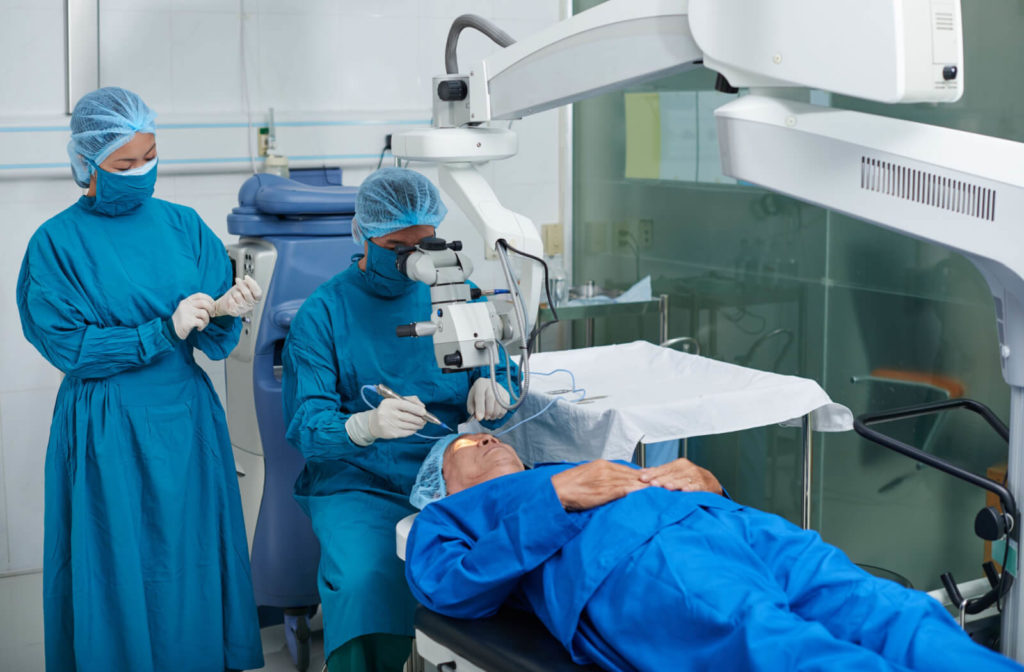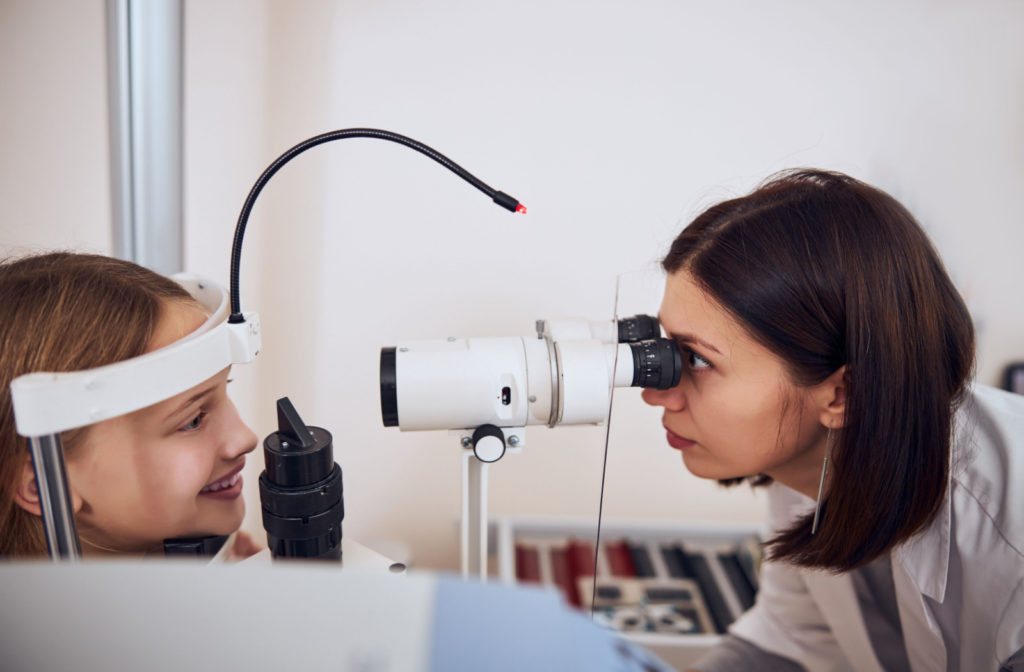The Value of Regular Check-Ups with an Eye Doctor Optometrist
Exploring the most up to date Technological Developments in Optometry and What They Mean for Optometrists
In the ever-evolving area of optometry, recent technological innovations are reshaping exactly how specialists come close to eye care. From the precision of Optical Coherence Tomography to the nuanced understandings used by AI-driven diagnostic tools, these innovations are setting brand-new criteria in patient assessment and therapy. Teleoptometry is positioned to redefine ease of access, ensuring that knowledge goes beyond geographical restrictions. As these developments permeate the practice, eye doctors are faced with the obstacle of accepting these tools to improve client end results. The inquiry stays: how will these technical shifts redefine the roles and obligations within the career?
Advancements in Diagnostic Devices
Advancing the area of optometry, developments in analysis devices have actually revolutionized the way eye care experts examine and detect eye problems and visual impairments. The previous years has actually witnessed significant technical improvements, allowing more extensive and precise examinations.
Another trick development is the introduction of advanced corneal topography systems, which map the surface area curvature of the cornea with accuracy. These devices are particularly valuable for fitting contact lenses and identifying corneal problems. Digital retinal imaging has actually transformed conventional ophthalmoscopy, offering comprehensive, breathtaking views of the retina that facilitate thorough visual assessments.
The development of wavefront aberrometry has also been critical, allowing the analysis of refractive mistakes with unequaled precision (Optometrist Chino). This modern technology assists in customizing restorative lenses and enhancing surgical outcomes for refractive surgical procedures. Collectively, these diagnostic advancements encourage optometrists to deliver remarkable person treatment, making sure very early treatment and customized treatment methods, eventually enhancing aesthetic wellness outcomes
AI in Patient Administration
Building on the foundation of advanced analysis devices, the unification of man-made knowledge (AI) in person management represents a transformative leap for optometry. AI systems are significantly used to enhance effectiveness, precision, and personalization in individual care.
Furthermore, AI-driven platforms facilitate streamlined person interactions and administrative processes. Automated organizing, virtual appointments, and individualized follow-up plans not only improve patient complete satisfaction however additionally maximize time management for specialists. These systems can triage clients based on the seriousness of their conditions, guaranteeing that those in crucial requirement get timely attention.
In addition, AI improves decision-making by giving eye doctors with evidence-based recommendations and therapy pathways. By incorporating data from electronic health and wellness records, AI devices provide insights that educate clinical decisions, decreasing the threat of errors and improving individual end results. As AI proceeds to develop, its function in individual monitoring will likely expand, reshaping the landscape of optometric care.
Advances in Retinal Imaging
In the world of optometry, retinal imaging has experienced exceptional technical developments that are boosting analysis capacities and person care. Advancements such as Optical Coherence Tomography (OCT) and fundus digital photography have actually reinvented just how optometrists assess the retina and imagine.
Improved imaging techniques like OCT angiography are further refining diagnostic accuracy. Eye Doctor Optometrist. Such advancements promote the identification of min retinal modifications that could signify illness development.
In addition, improvements in synthetic intelligence are increasing retinal imaging by enabling computerized analysis of huge datasets. These systems help eye doctors in identifying patterns a sign of pathology, consequently improving analysis accuracy and effectiveness. Jointly, these innovations are changing retinal imaging into a cornerstone of modern-day eye treatment, enhancing results and expanding restorative opportunities.
Teleoptometry's Growing Duty
Teleoptometry is significantly ending up being a crucial component of eye care, driven by developments in digital communication and analysis devices. This is especially advantageous in underserved and rural areas where access to specialized eye treatment is usually limited.
The assimilation of expert system (AI) more boosts teleoptometry, making it possible for the evaluation of visual data and assisting in the discovery of eye conditions such as glaucoma and diabetic person retinopathy. AI-powered algorithms can quickly translate complicated imaging data, giving optometrists with important understandings that strengthen medical decision-making.
Moreover, teleoptometry supports connection of care through smooth integration with electronic health and wellness records (EHRs), enabling eye doctors to maintain More Info extensive client histories. When seeking advice from with different professionals., this guarantees that patients receive personalized and regular treatment even.
In spite of these benefits, challenges remain, including making certain data safety and security and handling client expectations. Teleoptometry represents a significant stride towards more available, effective, and patient-centered eye care. As modern technology evolves, its role is positioned to expand better.

Future Fads in Eye Treatment
A myriad of cutting-edge fads is established to improve the future of eye care, driven by technological developments and the evolving demands of patients. One significant trend is the combination of expert system (AI) in diagnostics, which promises to enhance the accuracy browse this site and efficiency of eye examinations. AI algorithms can evaluate vast quantities of information from retinal photos, possibly spotting conditions like diabetic person retinopathy and glaucoma earlier than conventional techniques.
Additionally, personalized medication is acquiring grip in optometry, with hereditary screening notifying customized therapy strategies. This method aims to enhance client results by tailoring interventions to specific hereditary profiles. Wearable innovation, such as smart get in touch with lenses, is also on the horizon, supplying real-time tracking of intraocular stress or sugar levels, hence providing continual understandings right into eye and systemic health.
The adoption of increased reality (AR) and virtual truth (VIRTUAL REALITY) in training and client education is an additional emerging trend. These innovations provide immersive experiences that can enhance understanding and skills both for clients and eye doctors. As these patterns evolve, optometrists must stay abreast of technological advancements to supply innovative care, making certain improved client outcomes and complete satisfaction in the dynamic landscape of eye treatment.
Final Thought

Collectively, these diagnostic developments empower eye doctors to provide superior individual care, guaranteeing early treatment and customized treatment strategies, inevitably enhancing visual wellness results.

As these technologies proceed to advance, optometrists need to adjust and integrate them right into practice, eventually maximizing operations efficiency and boosting the requirement of eye treatment supplied to patients.